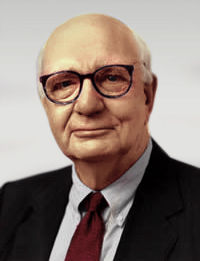Background
In February 2012, hedge fund insiders such as Boaz Weinstein of Saba Capital Management [9] became aware that the market in credit default swaps was possibly being affected by aggressive trading activities. The source of the unusual activity turned out to be Bruno Iksil, a trader for JPMorgan Chase & Co. Market-moving trades by the bank's Chief Investment Office had first been uncovered in June 2011 by Dan Alderson, a reporter at trade journal Creditflux, which reported on anomalies in CDX HY index tranche pricing dynamics caused by Iksil's trading activity. [10] The same journal reported on further tranche trading activity by the JP Morgan unit two months later. By 2012, heavy opposing bets to his positions had been made by traders, including another branch of JPMorgan, who purchased the derivatives that JPMorgan was selling in high volume. [11] [12] JPMorgan denied the first news reports, with Chairman and CEO Jamie Dimon calling it a "tempest in a teapot". [13] [14] Major losses of $2 billion were reported by the firm in May 2012 in relation to these trades. By this point, the issue was being investigated by the Federal Reserve, SEC, and FBI. [15]
On July 13, 2012, the total loss was updated to $5.8 billion with the addition of a $4.4 billion loss in the second quarter and subsequent recalculation of a loss of $1.4 billion for the first quarter. A spokesman for the firm claimed that projected total losses could be more than $7 billion. [16] The disclosure, which resulted in headlines in the media, did not disclose the exact nature of the trading involved, which remained in progress as of May 16, 2012, as JPMorgan's losses mounted and other traders sought to profit or avoid losses resulting from JPMorgan's positions. [17] [18] As of June 28, 2012, JPMorgan's positions were continuing to produce losses which could total as much as $9 billion under worst-case scenarios. [19] The trades were possibly related to CDX IG 9, a credit default swap index based on the default risk of major U.S. corporations [20] [21] that has been described as a "derivative of a derivative". [22] [23] On the company's emergency conference call, JPMorgan Chase Chairman and CEO Jamie Dimon said the strategy was "flawed, complex, poorly reviewed, poorly executed, and poorly monitored". [24]
Trades
On February 2, 2012, at the Harbor Investment Conference, speaking to an audience of investors, Boaz Weinstein recommended buying the Markit CDX North America Investment Grade Series 9 10-Year Index, CDX IG 9. [25] This contract was a standardized credit derivative contract with an initial 10y maturity, maturing on 20th December 2017. The price of the CDX IG index reflects the credit risk of an underlying basket of North American investment-grade companies. Weinstein had noticed this contract was an unusually cheap way to buy credit protection relative to other more liquid indices. It turned out that JPMorgan was shorting the index by making huge trades. [26] [27] JPMorgan's bet was that credit markets would strengthen; the index is based on 121 investment grade bonds issued by North American corporations. [25] Investors who followed Weinstein's tip did poorly during the early months of 2012 as JPMorgan strongly supported its position. However, by May, after investors became concerned about the implications of the European financial crisis, the situation reversed and JPMorgan suffered large losses. In addition to Weinstein's Saba Capital Management, Blue Mountain Capital, BlueCrest Capital, Lucidus Capital Partners, CQS, III, and Hutchin Hill [28] are hedge funds which are known to have benefited from taking the other side of the trade to JPMorgan. [9] A separate unit of JPMorgan was also on the winning side. [12]
The $6.2 billion loss came from three positions that partially offset one another. It occurred when the world's financial markets were in relative calm. Had quality spread curves twisted or worldwide economic distress been more pronounced the loss could have been much higher. [29]
The Financial Times column "Alphaville" analysis suggests that these positions were not volatile enough to account for the full losses reported. [30] They suggest that other positions are likely involved as well. [31]
JPM organizational structure, risk systems, accounting and internal control
The trades occurred within the Chief Investment Office (CIO), where staff were reportedly "faithfully executing strategies demanded by the bank's risk management model". This unit is reported to have very wide latitude in otherwise unsupervised trading. The company had been without a treasurer for five months during the time of the trades and had a relatively inexperienced executive, Irvin Goldman, in charge of risk management in the CIO. [35]
The trades took place in a unit of JPMorgan that reported directly to Chairman & CEO Jamie Dimon. In Congressional testimony it came out that Dimon wanted to be responsible for what information was revealed, and information was withheld from the regulators. There had been a series of violations of the Sarbanes–Oxley regulations requiring certain protections. [36]
On May 10, 2012, Dimon announced that there was a loss of at least $2 billion through "egregious mistakes" in trading. [37]

Investment banking pertains to certain activities of a financial services company or a corporate division that engages in providing advisory-based services on financial transactions for clients, such as institutional investors, corporations, and governments. Traditionally associated with corporate finance, such a bank might assist in raising financial capital by underwriting or acting as the client's agent in the issuance of debt or equity securities. An investment bank may also assist companies involved in mergers and acquisitions (M&A) and provide ancillary services such as market making, trading of derivatives and equity securities, FICC services or research. Most investment banks maintain prime brokerage and asset management departments in conjunction with their investment research businesses. As an industry, it is broken up into the Bulge Bracket, Middle Market, and boutique market.

JPMorgan Chase & Co. is an American multinational financial institution headquartered in New York City and incorporated in Delaware. It is the largest bank in the United States and the world's largest bank by market capitalization as of 2023. As the largest of Big Four banks, the firm is considered systemically important by the Financial Stability Board. Its size and scale have often led to enhanced regulatory oversight as well as the maintenance of an internal "Fortress Balance Sheet" of capital reserves. The firm is headquartered at 383 Madison Avenue in Midtown Manhattan and is set to move into the under-construction JPMorgan Chase Building at 270 Park Avenue in 2025.

A credit default swap (CDS) is a financial swap agreement that the seller of the CDS will compensate the buyer in the event of a debt default or other credit event. That is, the seller of the CDS insures the buyer against some reference asset defaulting. The buyer of the CDS makes a series of payments to the seller and, in exchange, may expect to receive a payoff if the asset defaults.

JPMorgan Chase Bank, N.A., doing business as Chase, is an American national bank headquartered in New York City that constitutes the consumer and commercial banking subsidiary of the U.S. multinational banking and financial services holding company, JPMorgan Chase. The bank was known as Chase Manhattan Bank until it merged with J.P. Morgan & Co. in 2000. Chase Manhattan Bank was formed by the merger of the Chase National Bank and the Manhattan Company in 1955. The bank merged with Chemical Bank New York in 1996 and later merged with Bank One Corporation in 2004 and in 2008 acquired the deposits and most assets of Washington Mutual.

James Dimon is an American billionaire banker and business executive. He has been the chairman and chief executive officer (CEO) of JPMorgan Chase since 2006.

The Bear Stearns Companies, Inc. was an American investment bank, securities trading, and brokerage firm that failed in 2008 as part of the global financial crisis and recession. After its closure it was subsequently sold to JPMorgan Chase. The company's main business areas before its failure were capital markets, investment banking, wealth management, and global clearing services, and it was heavily involved in the subprime mortgage crisis.
Proprietary trading occurs when a trader trades stocks, bonds, currencies, commodities, their derivatives, or other financial instruments with the firm's own money to make a profit for itself. Proprietary trading can create potential conflicts of interest such as insider trading and front running.
Amaranth Advisors LLC was an American multi-strategy hedge fund founded by Nicholas M. Maounis and headquartered in Greenwich, Connecticut. At its peak, the firm had up to $9.2 billion in assets under management before collapsing in September 2006, after losing in excess of $6 billion on natural gas futures. Amaranth Advisors collapse is one of the biggest hedge fund collapses in history and at the time (2006) largest known trading losses.
A synthetic CDO is a variation of a CDO that generally uses credit default swaps and other derivatives to obtain its investment goals. As such, it is a complex derivative financial security sometimes described as a bet on the performance of other mortgage products, rather than a real mortgage security. The value and payment stream of a synthetic CDO is derived not from cash assets, like mortgages or credit card payments – as in the case of a regular or "cash" CDO—but from premiums paying for credit default swap "insurance" on the possibility of default of some defined set of "reference" securities—based on cash assets. The insurance-buying "counterparties" may own the "reference" securities and be managing the risk of their default, or may be speculators who've calculated that the securities will default.

The Volcker Rule is § 619 of the Dodd–Frank Wall Street Reform and Consumer Protection Act. The rule was originally proposed by American economist and former United States Federal Reserve Chairman Paul Volcker in 2010 to restrict United States banks from making certain kinds of speculative investments that do not benefit their customers but not implemented until July 2015. Volcker argued that such speculative activity played a key role in the 2007–2008 financial crisis. The rule is often referred to as a ban on proprietary trading by commercial banks, whereby deposits are used to trade on the bank's own accounts, although a number of exceptions to this ban were included in the Dodd–Frank law.

Blythe Masters is a British private equity executive and former financial services and fintech executive. She is a former executive at JPMorgan Chase, where she was widely credited for developing the credit default swap as a financial instrument. She is founding partner of FinTech private equity firm, Motive Partners, and an Advisory Board Member of the US Chamber of Digital Commerce, a Board Member of GCM Grosvenor, Forge Global, CAIS Group, and SymphonyAI. She is the former CEO of Motive Capital Corp, and a former board member of Credit Suisse Group.
Boaz Weinstein is an American hedge fund manager and founder of Saba Capital Management. He rose to prominence at Deutsche Bank in the early and mid 2000s with his credit default swap and capital structure arbitrage trading strategies. He then formed a proprietary trading group within Deutsche Bank. After leaving the bank in 2009, Weinstein started Saba Capital Management as a separate hedge fund. As of September 2022, Saba manages $4.8 billion in assets.

Highbridge Capital Management, LLC is a multi-strategy alternative investment management firm founded by Glenn Dubin and Henry Swieca in 1992. In 2004, it was purchased by JPMorgan Chase; as of 2019, it had about $3.9 billion in assets under management, out of $150 billion in JPMorgan's global alternatives division.
Ina R. Drew is a former high-ranking executive on Wall Street. She was the chief investment officer for JPMorgan Chase before resigning after the company suffered a trading loss of $9 billion in April/May 2012. A report produced by the United States Senate Permanent Subcommittee on Investigations revealed that she did not understand the trading strategy, and could not explain it to the subcommittee. Furthermore, she lied to the subcommittee by stating she had not seen or received the "decision table" which outlined the various trading options for her in January 2012.
Barry L. Zubrow is an American business executive and investment banker. Spending most of his career at Goldman Sachs, including in key leadership roles, he subsequently served as the Chief Risk Officer of JPMorgan Chase during the 2008 financial crisis. He was later appointed the Head of Corporate and Regulatory Affairs at that company between January and November 2012.

Stephanie Ruhle-Hubbard is the host of MSNBC's The 11th Hour with Stephanie Ruhle and the NBC News Senior Business analyst. Previously, Ruhle was managing editor and news anchor for Bloomberg Television and editor-at-large for Bloomberg News. Ruhle co-hosted the Bloomberg Television show Bloomberg GO and was one of three Bloomberg reporters who broke the story identifying the trader behind the 2012 JPMorgan Chase trading loss.
Alayne Fleischmann is a lawyer formerly employed by JPMorgan Chase. She is known as the whistleblower who provided evidence resulting in a $9 billion settlement by JPMorgan Chase to the United States Federal Government. The case has been called one of the most significant white-collar crime cases in US history.

William Thomas Winters, CBE is an American banker who is the chief executive (CEO) of Standard Chartered, and was formerly co-head of JPMorgan Chase's investment bank.
Saba Capital Management (Saba) is a credit relative value focused hedge fund firm established in 2009. It also has strategies in tail hedge, closed-end funds and SPACs.










